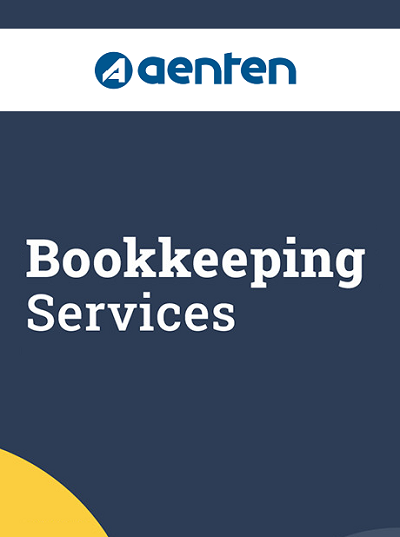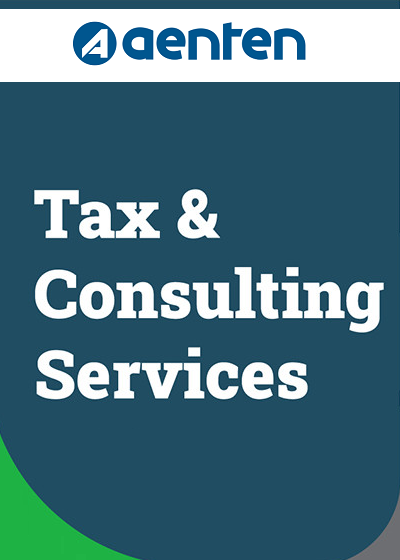Running a small business can be a challenging endeavor, especially when it comes to managing overhead costs. Overhead costs encompass various expenses necessary to keep your business operating but don’t directly contribute to your product or service. While some overhead costs are unavoidable, finding ways to reduce them can significantly impact your business’s profitability and sustainability. In this guide, we will explore ten easy and practical tips to help small businesses minimize overhead costs without compromising on quality or productivity.

Running a small business is a dream come true for many entrepreneurs. However, it often comes with a tight budget and the constant challenge of managing overhead costs. Overhead costs, also known as indirect costs, refer to the expenses associated with operating your business that aren’t directly tied to producing a specific product or service. These costs can include rent, utilities, insurance, office supplies, and more. While overhead costs are necessary for your business to function, finding ways to reduce them can free up capital for growth, investment, or weathering economic downturns.
In this guide, we will delve into ten practical and actionable tips that small business owners can implement to reduce overhead costs effectively. By following these tips, you can make your business more financially resilient and competitive in today’s dynamic business environment.
1. Understand Your Overhead Costs
The first step in reducing overhead costs is gaining a comprehensive understanding of what constitutes these expenses for your business. Overhead costs can vary significantly depending on your industry, business size, and location. To identify and manage these costs effectively, you should:
- Create an Overhead Cost List: Compile a list of all the expenses that fall under the overhead category. This list should include items like rent, utilities, insurance, office supplies, maintenance, and any other indirect costs specific to your business.
- Categorize Expenses: Group your overhead expenses into categories to gain a clearer picture of where your money is going. Common categories include facilities, utilities, administrative costs, and more.
- Review Financial Statements: Carefully examine your financial statements, including income statements and balance sheets, to identify all overhead expenses. This analysis will help you determine which costs are most significant and where potential savings opportunities lie.
- Monitor and Update: Overhead costs can change over time, so it’s essential to regularly monitor and update your list and categorization to ensure accuracy.
Once you have a thorough understanding of your overhead costs, you can begin to implement strategies to reduce them without sacrificing the quality of your products or services.
2. Evaluate Your Business Model
Before diving into specific cost-cutting measures, take a step back and evaluate your current business model. Your business model defines how your company generates revenue and delivers value to customers. Here’s how to assess and potentially optimize your business model:
- Value Proposition: Ensure your value proposition aligns with your target market’s needs and desires. This alignment can help increase sales and revenue, reducing the impact of overhead costs on your bottom line.
- Pricing Strategy: Review your pricing strategy to ensure it covers your costs while remaining competitive in the market. Adjust pricing if necessary to improve profitability.
- Customer Segmentation: Identify your most profitable customer segments and focus your marketing efforts on attracting and retaining them. This can result in a more efficient allocation of resources.
- Product or Service Mix: Analyze your product or service mix to identify which offerings contribute the most to your revenue and profitability. Consider phasing out or optimizing less profitable offerings.
- Distribution Channels: Assess your distribution channels to ensure they are cost-effective. Explore alternatives such as online sales, partnerships, or outsourcing distribution.
By evaluating and refining your business model, you can create a solid foundation for reducing overhead costs while maintaining or increasing your business’s profitability.
Read Also : The Difference : Outsourced Accounting Vs. In-House Accounting
3. Embrace Technology
In today’s digital age, technology offers numerous opportunities to streamline operations, improve efficiency, and reduce overhead costs. Here are several ways you can leverage technology for cost savings:
- Accounting and Financial Software: Invest in accounting and financial software to automate bookkeeping tasks, track expenses, and generate financial reports accurately. This reduces the need for a dedicated in-house accountant.
- Cloud-Based Services: Embrace cloud-based services for data storage, collaboration, and communication. These services often offer cost-effective, scalable solutions without the need for extensive hardware and maintenance.
- Inventory Management Systems: Implement an inventory management system to optimize stock levels, reduce carrying costs, and prevent overstocking or understocking issues.
- Customer Relationship Management (CRM) Software: Use CRM software to manage customer relationships, track sales leads, and streamline marketing efforts. This can enhance customer retention and boost sales.
- E-commerce Platforms: If applicable, establish an online presence and utilize e-commerce platforms to reach a broader audience and reduce the costs associated with maintaining physical storefronts.
- Automation Tools: Implement automation tools for repetitive tasks, such as email marketing, customer support, and social media posting. Automation can reduce labor costs and enhance efficiency.
- Data Analytics and Insights: Utilize data analytics tools to gain insights into customer behavior, market trends, and operational efficiency. Data-driven decisions can lead to more effective cost-saving strategies.
- Remote Work Solutions: Embrace remote work technologies and practices, which can reduce the need for physical office space and associated costs.
By incorporating technology into your business operations, you can not only reduce overhead costs but also enhance productivity and competitiveness in your industry.
4. Consider Outsourcing
Outsourcing certain tasks or services can be a cost-effective way to access specialized expertise and reduce overhead costs. Instead of hiring full-time employees to handle every aspect of your business, consider outsourcing the following functions:
- Accounting and Bookkeeping: Outsourcing financial tasks to a qualified accounting firm can save you the expenses associated with hiring and retaining in-house accountants.
- Customer Support: Many businesses outsource customer support to call centers or virtual assistants, reducing the need for a dedicated customer support team.
- IT Support: Instead of maintaining an in-house IT department, consider outsourcing IT support and services to experts who can provide on-demand assistance.
- Content Creation: If content marketing is essential for your business, you can outsource content creation to freelance writers or agencies, avoiding the costs of full-time content staff.
- Human Resources: HR functions, such as payroll processing and benefits administration, can be outsourced to professional employer organizations (PEOs) or HR service providers.
- Manufacturing or Production: Depending on your industry, outsourcing manufacturing or production processes to specialized facilities can lead to significant cost savings.
When outsourcing, carefully vet potential partners or service providers to ensure they align with your business’s values, quality standards, and cost-saving goals.
5. Negotiate Supplier Contracts
Establishing and maintaining good relationships with your suppliers is crucial for reducing overhead costs. Negotiating supplier contracts and terms can lead to cost savings in several ways:
- Price Negotiation: Engage in price negotiations with your suppliers to secure favorable terms. Bulk purchasing or long-term commitments may lead to discounts.
- Payment Terms: Request extended payment terms to improve your cash flow. This can provide you with more time to generate revenue before settling supplier invoices.
- Consolidate Suppliers: Consider consolidating your suppliers whenever possible. Fewer suppliers can mean fewer administrative tasks and potentially better pricing.
- Review Contracts Periodically: Don’t assume that supplier contracts are set in stone. Periodically review and renegotiate contracts to ensure they remain competitive.
- Explore Alternative Suppliers: Research alternative suppliers who may offer similar or superior quality products or services at more competitive prices.
Effective supplier negotiations can result in substantial cost reductions, making this strategy a valuable tool in your cost-saving arsenal.
Read Also : The Business Structure : Corporations And Cooperatives.
6. Optimize Energy Usage
Energy costs, such as electricity and heating, can be significant overhead expenses for small businesses. Implementing energy-efficient practices and technologies can lead to substantial cost savings over time:
- Energy-Efficient Lighting: Replace traditional incandescent bulbs with energy-efficient LED or CFL bulbs. Install motion sensors and timers to ensure lights are only on when needed.
- HVAC Systems: Maintain and service your heating, ventilation, and air conditioning (HVAC) systems regularly to ensure they operate efficiently. Upgrade to energy-efficient HVAC systems if feasible.
- Insulation and Sealing: Properly insulate your business premises and seal any gaps or cracks in doors, windows, and walls to prevent energy leaks.
- Smart Thermostats: Install programmable or smart thermostats to control temperature settings efficiently, reducing heating and cooling costs.
- Equipment Upgrades: Replace outdated and energy-guzzling equipment with newer, energy-efficient models. Energy-efficient appliances and office equipment can lead to long-term savings.
- Employee Awareness: Educate employees about energy-saving practices, such as turning off lights and equipment when not in use, and encourage their participation.
- Renewable Energy Sources: Explore options for incorporating renewable energy sources, such as solar panels or wind turbines, into your energy supply to reduce reliance on traditional power sources.
By adopting energy-efficient practices and technologies, you can significantly reduce energy-related overhead costs while also contributing to environmental sustainability.
7. Manage Inventory Efficiently
Effective inventory management is crucial for controlling overhead costs related to storage, insurance, and the risk of obsolescence. Here are strategies to optimize your inventory:
- Just-In-Time (JIT) Inventory: Implement a JIT inventory system to order and receive products or materials just in time for production or sale. This reduces the need for excessive stockpiling.
- ABC Analysis: Categorize your inventory into A, B, and C categories based on importance and usage. Focus on optimizing inventory for high-value items while minimizing stock for lower-value items.
- Inventory Tracking Software: Use inventory management software to track stock levels, monitor sales trends, and automate reorder processes.
- Supplier Collaboration: Collaborate with key suppliers to establish efficient supply chains, ensuring timely deliveries and reduced inventory carrying costs.
- Regular Audits: Conduct regular inventory audits to identify and address discrepancies, reduce shrinkage, and minimize losses.
Efficient inventory management can free up capital, reduce storage costs, and minimize the risk of holding obsolete or unsold inventory.
8. Reduce Real Estate Costs
Real estate expenses, including rent or mortgage payments, property taxes, and maintenance, can be substantial overhead costs for businesses. Here are strategies to reduce real estate costs:
- Downsize Office Space: If you have excess office space, consider downsizing to a smaller location that better suits your current needs.
- Sublease or Share Office Space: Explore subleasing or sharing office space with other businesses to split the rent and related expenses.
- Remote Work Policies: Embrace remote work policies, allowing employees to work from home or other remote locations, reducing the need for physical office space.
- Flexible Office Arrangements: Consider flexible office arrangements such as co-working spaces or shared office facilities, which can be more cost-effective than traditional office leases.
- Negotiate Lease Terms: When renewing or signing a lease, negotiate favorable terms, such as rent reductions or lease incentives.
By optimizing your real estate arrangements, you can achieve significant cost savings without compromising the functionality and professionalism of your business.
Read Also : The 10 Benefits Of Cloud Accounting And Its Advantages
9. Review Marketing Strategies
Marketing is essential for attracting customers and growing your business, but it can also be a source of significant overhead costs. Here are ways to review and optimize your marketing strategies:
- ROI Analysis: Conduct a thorough analysis of your marketing efforts to determine which channels and campaigns generate the highest return on investment (ROI). Allocate resources to the most effective strategies.
- Digital Marketing: Explore cost-effective digital marketing channels such as content marketing, social media marketing, email marketing, and search engine optimization (SEO) to reach a broader audience at a lower cost.
- Targeted Advertising: Optimize your advertising spend by targeting specific demographics and customer segments, reducing wasteful spending on broad-reaching campaigns.
- Content Repurposing: Repurpose existing content and marketing materials to reduce the time and cost associated with creating new content from scratch.
- Marketing Automation: Implement marketing automation tools to streamline campaign management, lead nurturing, and customer engagement, reducing the need for manual labor.
- Social Media Engagement: Focus on building organic engagement and relationships on social media platforms, which can reduce the reliance on paid advertising.
By reevaluating your marketing strategies and focusing on cost-effective approaches, you can maintain effective marketing while minimizing overhead costs.
10. Employee Training and Development
Investing in employee training and development can lead to increased productivity, reduced turnover, and long-term cost savings. Here’s how to approach this strategy:
- Skill Enhancement: Offer opportunities for employees to acquire new skills or improve existing ones. This can lead to more efficient processes and higher-quality work.
- Leadership Development: Identify and nurture potential leaders within your organization to reduce the need for external hires or management consultants.
- Employee Retention: High turnover can be costly due to recruitment and training expenses. Invest in programs and incentives to retain top talent.
- Cross-Training: Cross-train employees to handle multiple roles or tasks within the organization, improving flexibility and reducing the need for additional hires.
- Performance Recognition: Implement performance recognition programs to motivate and reward employees for their contributions, increasing job satisfaction and loyalty.
- Continued Learning: Encourage employees to engage in continued learning and professional development to stay current in their fields.
While investing in employee training and development requires an initial outlay, the long-term benefits can result in cost savings and a more skilled and loyal workforce.
Note : Aenten provides QuickBooks Bookkeeping Services, QuickBooks Support Services & QuickBooks Consulting Services for startups and businesses.
Conclusion
Reducing overhead costs is a critical aspect of running a successful small business. By implementing these ten easy and practical tips, you can effectively manage your business’s overhead expenses without sacrificing quality or productivity. Remember that cost reduction efforts should be strategic and tailored to your specific business needs and goals.
Continuously monitor your financial performance, assess the impact of cost-saving measures, and be open to adjusting your strategies as your business evolves. With a proactive approach to overhead cost management, your small business can thrive, adapt to changing market conditions, and build a solid foundation for long-term success.
Remember that while reducing overhead costs is essential, it should not come at the expense of delivering value to your customers. Striking the right balance between cost-cutting and maintaining quality and service is key to sustaining and growing your business.





